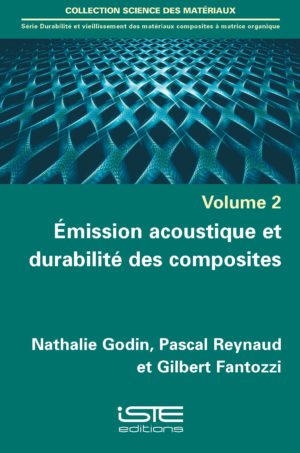
One of the issues in structural health control is the early detection of damage before it leads to ruin. In this context, acoustic emission is a technique well adapted to monitoring, in real time, the health of a structure or the materials that constitute it. Indeed, the mechanisms of damage are accompanied by energy release […]
One of the issues in structural health control is the early detection of damage before it leads to ruin. In this context, acoustic emission is a technique well adapted to monitoring, in real time, the health of a structure or the materials that constitute it. Indeed, the mechanisms of damage are accompanied by energy release in the form of acoustic waves. Sensors on the surface of laboratory structures or specimens record AE signals.
This book begins with a description of acoustic emission and its main characteristics, and part of the book is dedicated to the identification of the acoustic signature of the different damage mechanisms occurring in organic matrix composite materials (OMC), as well as in ceramic matrix composite materials (CMC). The authors present not only the contributions of this approach, but also the main difficulties and limitations. Finally, life expectancy forecasts using AE for long-term tests are discussed.
1. Acoustic Emission: Definition and Overview.
2. Identification of the Acoustic Signature of Damage Mechanisms.
3. Lifetime Estimation.

